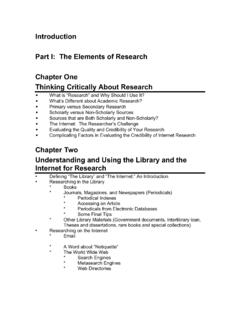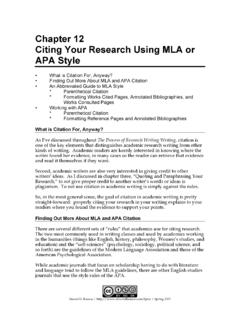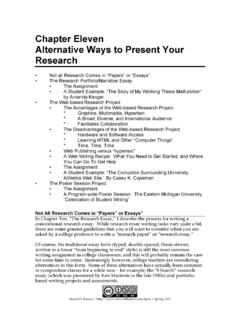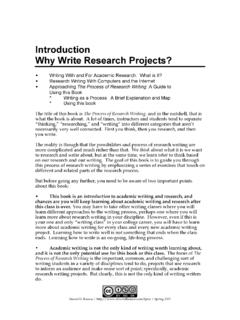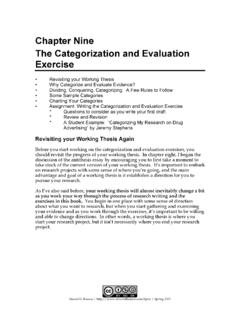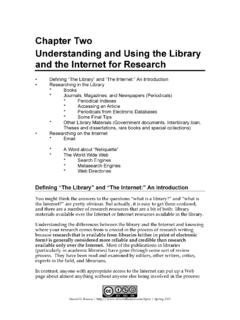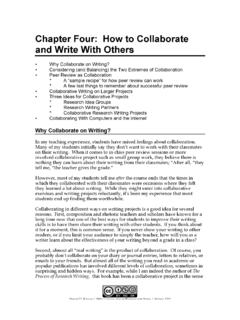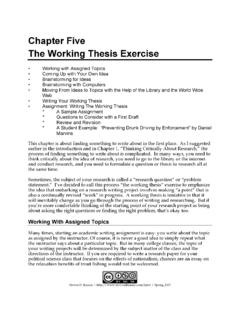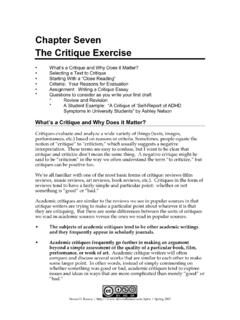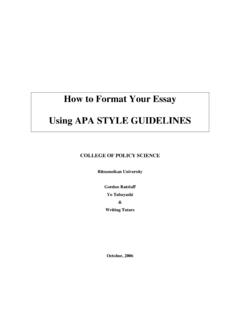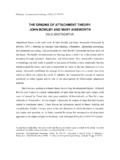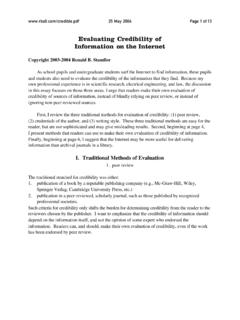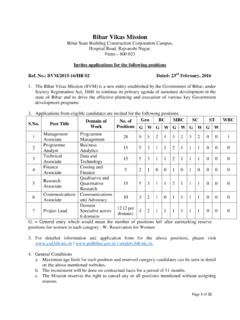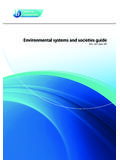Transcription of Chapter Three Quoting, Paraphrasing, and …
1 Steven D. Krause | | Spring 2007 Chapter Three quoting , paraphrasing , and avoiding plagiarism How to Summarize: An Overview How to Quote and Paraphrase: An Overview When to Quote, When to Paraphrase Four Examples of Quotes and Paraphrases How to Avoid plagiarism in the research Process plagiarism and the Internet Learning how to effectively quote and paraphrase research can be difficult and it certainly takes practice. Hopefully, your abilities to make good use of your research will improve as you work through the exercises in part two and Three of The Process of research Writing, not to mention as you take on other research writing experiences beyond this class.
2 The goal of this Chapter is to introduce some basic strategies for summarizing, quoting and paraphrasing research in your writing and to explain how to avoid plagiarizing your research . How to Summarize: An Overview A summary is a brief explanation of a longer text. Some summaries, such as the ones that accompany annotated bibliographies, are very short, just a sentence or two. Others are much longer, though summaries are always much shorter than the text being summarized in the first place. Hyperlink: Chapter Six, The Annotated Bibliography Exercise, also offers advice on writing effective summaries. Summaries of different lengths are useful in research writing because you often need to provide your readers with an explanation of the text you are discussing.
3 This is especially true when you are going to quote or paraphrase from a source. Of course, the first step in writing a good summary is to do a thorough reading of the text you are going to summarize in the first place. Beyond that important start, there are a few basic guidelines you should follow when you write summary material: Stay neutral in your summarizing. Summaries provide just the facts and are not the place where you offer your opinions about the text you are summarizing. Save your opinions and evaluation of the evidence you are summarizing for other parts of your writing. Don t quote from what you are summarizing. Summaries will be more useful to you and your colleagues if you write them in your own words.
4 The Process of research Writing Chapter Three , quoting , paraphrasing , and avoiding plagiarism , 2 Steven D. Krause | | Spring 2007 Don t cut and paste from database abstracts. Many of the periodical indexes that are available as part of your library s computer system include abstracts of articles. Do no cut this abstract material and then paste it into your own annotated bibliography. For one thing, this is plagiarism . Second, cutting and pasting from the abstract defeats one of the purposes of writing summaries and creating an annotated bibliography in the first place, which is to help you understand and explain your research . Hyperlink: For more advice on close reading, see the section called Starting With a Close Reading in Chapter Seven, The Critique Writing Exercise.
5 How to Quote and Paraphrase: An Overview Writers quote and paraphrase from research in order to support their points and to persuade their readers. A quote or a paraphrase from a piece of evidence in support of a point answers the reader s question, says who? This is especially true in academic writing since scholarly readers are most persuaded by effective research and evidence. For example, readers of an article about a new cancer medication published in a medical journal will be most interested in the scholar s research and statistics that demonstrate the effectiveness of the treatment. Conversely, they will not be as persuaded by emotional stories from individual patients about how a new cancer medication improved the quality of their lives.
6 While this appeal to emotion can be effective and is common in popular sources, these individual anecdotes do not carry the same sort of scholarly or scientific value as well-reasoned research and evidence. Of course, your instructor is not expecting you to be an expert on the topic of your research paper. While you might conduct some primary research , it s a good bet that you ll be relying on secondary sources such as books, articles, and Web sites to inform and persuade your readers. You ll present this research to your readers in the form of quotes and paraphrases. A quote is a direct restatement of the exact words from the original source. The general rule of thumb is any time you use Three or more words as they appeared in the original source, you should treat it as a quote.
7 A paraphrase is a restatement of the information or point of the original source in your own words. While quotes and paraphrases are different and should be used in different ways in your research writing (as the examples in this section suggest), they do have a number of things in common. Both quotes and paraphrases should: be introduced to the reader, particularly the first time you mention a source; The Process of research Writing Chapter Three , quoting , paraphrasing , and avoiding plagiarism , 3 Steven D. Krause | | Spring 2007 include an explanation of the evidence which explains to the reader why you think the evidence is important, especially if it is not apparent from the context of the quote or paraphrase; and include a proper citation of the source.
8 The method you should follow to properly quote or paraphrase depends on the style guide you are following in your academic writing. The two most common style guides used in academic writing are the Modern Language Association (MLA), and the American Psychological Association (APA). I discuss both of these different style guides in some detail in the Appendix of this book. Your instructor will probably assign one of these styles before you begin working on your project, however, if he/she doesn t mention this, be sure to ask. When to Quote, When to Paraphrase The real art to research writing is using quotes and paraphrases from evidence effectively in order to support your point.
9 There are certain rules, dictated by the rules of style you are following, such as the ones presented by the MLA or the ones presented by the APA. There are certain guidelines and suggestions, like the ones I offer in the previous section and the ones you will learn from your teacher and colleagues. But when all is said and done, the question of when to quote and when to paraphrase depends a great deal on the specific context of the writing and the effect you are trying to achieve. Learning the best times to quote and paraphrase takes practice and experience. In general, it is best to use a quote when: The exact words of your source are important for the point you are trying to make.
10 This is especially true if you are quoting technical language, terms, or very specific word choices. You want to highlight your agreement with the author s words. If you agree with the point the author of the evidence makes and you like their exact words, use them as a quote. You want to highlight your disagreement with the author s words. In other words, you may sometimes want to use a direct quote to indicate exactly what it is you disagree about. This might be particularly true when you are considering the antithetical positions in your research writing projects. In general, it is best to paraphrase when: There is no good reason to use a quote to refer to your evidence.
